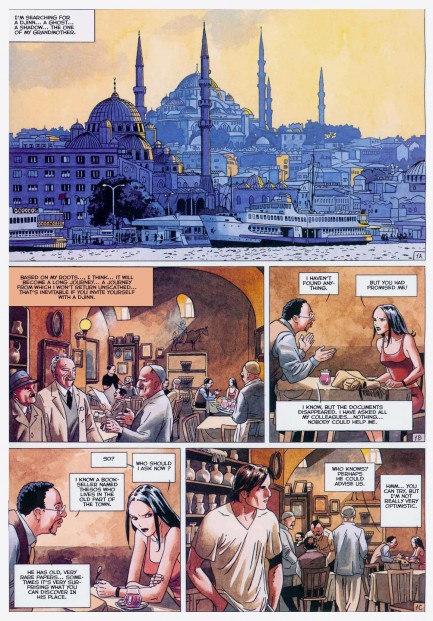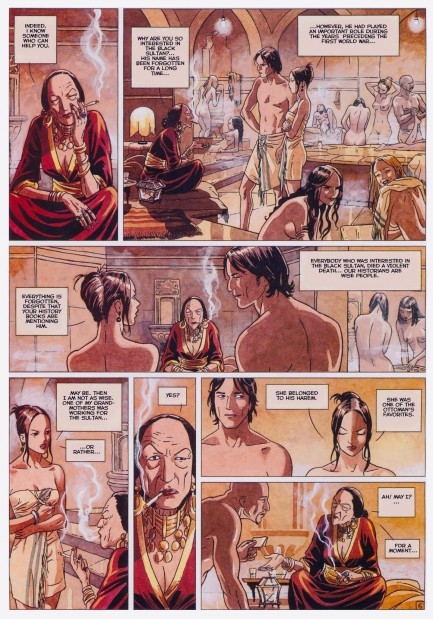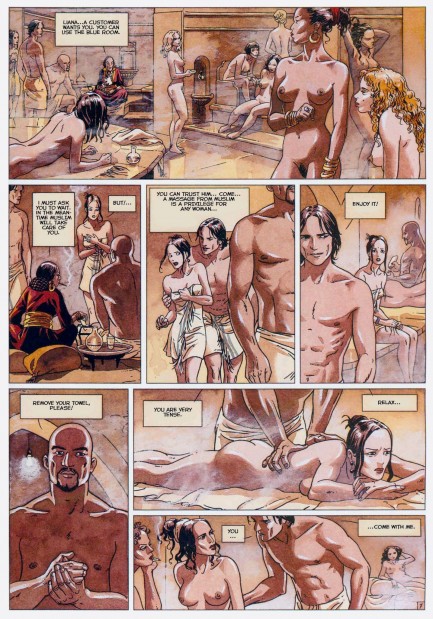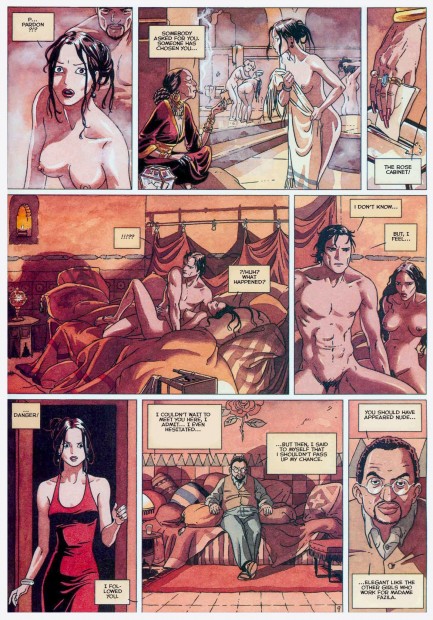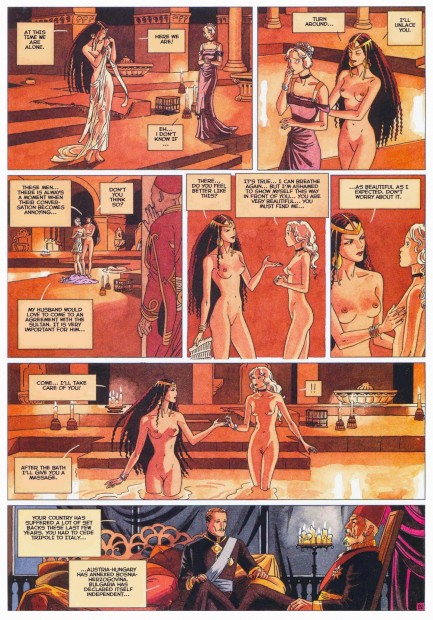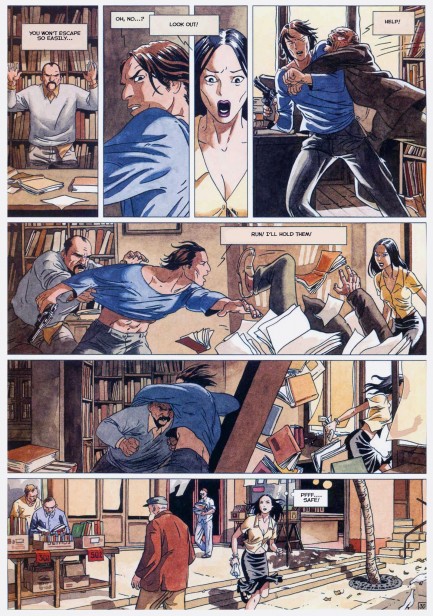| Vintage Pulp | Aug 18 2023 |

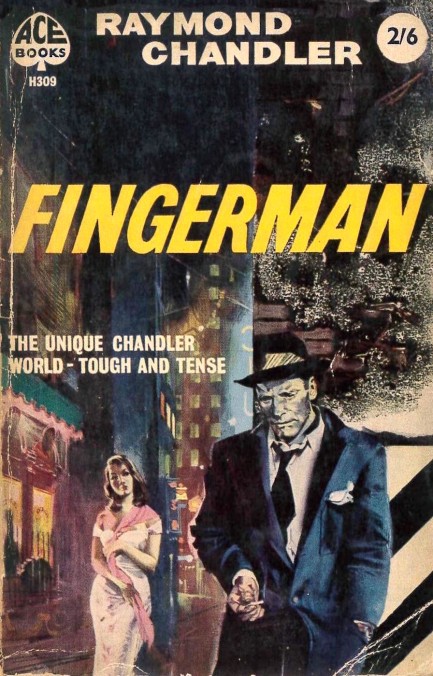
This cover for Raymond Chandler's 1960 story collection Fingerman was painted by an uncredited artist, but once again we're thinking it's Sandro Symeoni on the brush. 1958 to 1960 was when he was working extensively with Ace Books, and this illustration is very much in his style, as we've discussed here and here. The book consists of four offerings: the stories “Finger Man,” which was first published in Black Mask in October 1934, “The King in Yellow,” from the March 1938 issue of Dime Detective Magazine, and “Pearls Are a Nuisance,” also from Dime Detective Magazine, coming in April 1939. The last piece is a Chandler essay titled, “The Simple Art of Murder.” A couple of the aforementioned tales also appeared in Five Sinister Characters. All the stories are good, but we talked about “The King in Yellow” in a bit more detail a while back, so if you're interested feel free to check here.
| Vintage Pulp | Dec 11 2022 |

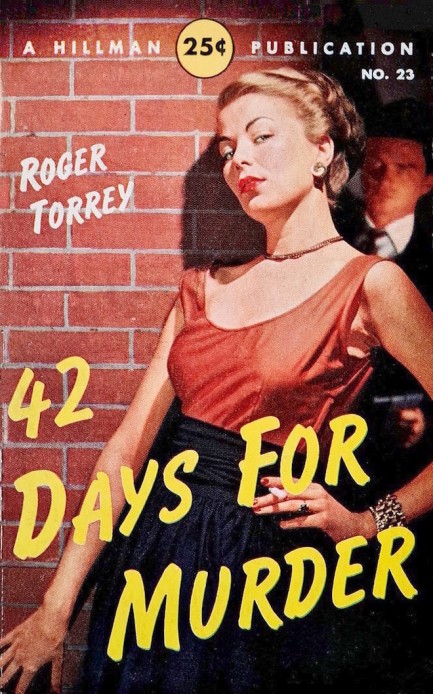
| Vintage Pulp | Oct 2 2018 |

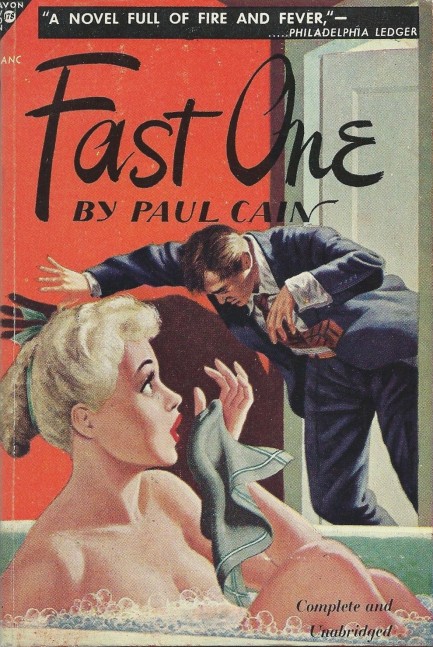
The cover art for this 1948 Avon edition of Paul Cain's Fast One kind of looks like a guy's about to drop dead in front of a bathing woman, but actually he's merely been shoved into the bathroom by the story's anti-hero protagonist. It's always interesting which moment an artist (or a publisher directing an artist) will choose for a cover. This is not an important event in the narrative, but the chance to show a woman in the bath was apparently too enticing to pass up.
The backdrop here is prohibition era Los Angeles and the main character Gerry Kells and the femme fatale S (we never learn her first name) are pulled into a maelstrom of trouble when Kells refuses to work for his old crime buddies and in retaliation they frame him for murder. The novel was put together from five stories that appeared in Black Mask magazine, and when it was published Cain—aka Peter Ruric, aka George Sims—was hailed as a giant of hard-boiled fiction on par with Hammett and Chandler. We don't know about that, but Fast One is a good read—bare bones and quick paced and filled with random brutality.
The bio page for Fast One says Cain “has lived as he writes—at high speed and with violence.” It's a phrase that makes you want details but none are provided. We imagine the description is accurate, though, because Cain published this single novel, as well as some screenplays (including for The Black Cat), then vanished into obscurity and eventually died of alcoholism.
| Vintage Pulp | Nov 5 2017 |


The book was written by Horace McCoy, who is often called an underrated writer, but once multiple sources use that term, maybe you aren't underrated anymore. He wrote numerous tales for the classic pulp magazine Black Mask, as well as for Detective-Dragnet Magazine, Man Stories, et al, before branching out to author classic novels like Kiss Tomorrow Goodbye and They Shoot Horses, Don’t They? Generally, No Pockets in a Shroud is considered substandard for McCoy, but it has an interesting point of view. The rather intense cover art is signed “T.V.,” which we take to mean Tony Varady. And the title, incidentally, is just another way of saying: You can't can't take it with you.
| Modern Pulp | Apr 24 2009 |

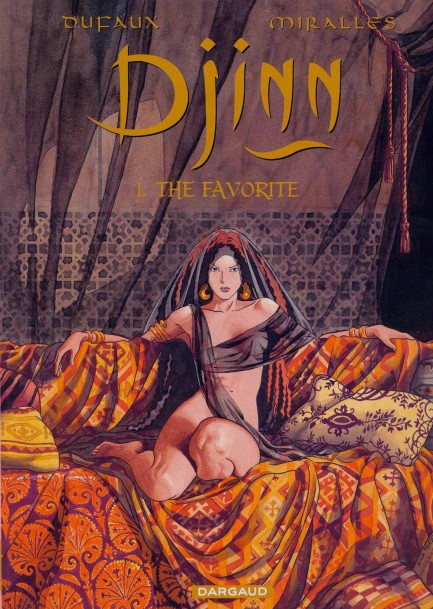
The image above was painted by Spanish artist Ana Miralles, and is the cover of book 1 in a series of graphic novels called Djinn. Created in 2006 by venerable Belgian writer Jean Dufaux, the Djinn saga tells of Kim Nelson, a young woman who travels to Istanbul seeking clues to her grandmother’s mysterious past. She soon learns that during the waning days of the Ottoman Empire her grandmother was a harem girl, the beautiful favorite of the Black Sultan. As more clues pile up and the mystery deepens, Kim finds herself dealing with shady characters and persistent paramours in bookshops, baths, and bedchambers all over the old city. These sorts of comics always remind us of Black Mask and other vintage mags that sometimes mixed romance with foreign adventure, but if you aren’t familiar with 1930s pulps, think of Djinn as Romancing the Stone crossed with Emmanuelle. We’ve posted some fantastically illustrated interior pages below from our copy of Djinn 1: The Favorite. We recommend this series highly.
